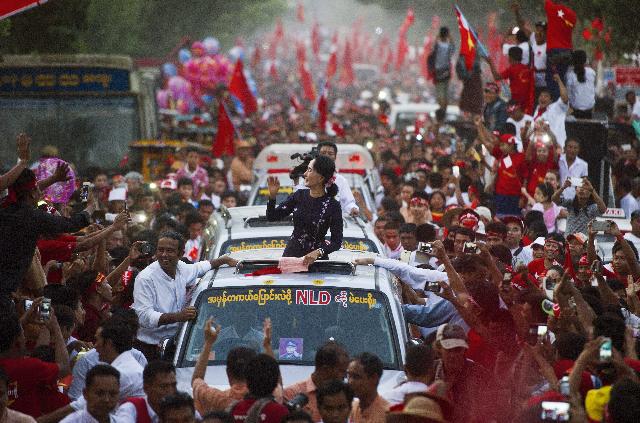Women’s rights have become the pinnacle of the western/eastern debate in the last decade or so. Feminists, their allies, and even those opposed to the gender equality movement, have become entrenched in this dichotomic narrative that seeks to uplift western women while delegitimizing the developments women in the east have accomplished. White feminism and white women are applauded for their contributions to the movement, yet the contributions of women of colour are pushed under the rug and their voices silenced. The contrasts made between eastern and western women erases important narratives that are hidden under shadows of this bilateral discussion. Women’s rights in different parts of the world and among different women can be studied and understood in objective terms without a comparative analysis. Qualifiers such as east and west are far too vague for any critical analysis to be made. Discrepancies regarding women’s rights exist both within the eastern and western worlds so it is crucial that these issues are specified and contextualized within their respective countries. This paper provides a preliminary introduction to the state of gender inequality in the Islamic republic of Iran and it should be stressed that this is just the tip of the iceberg and a single narrative among many others that deserve to be acknowledged and explored.
Can White Women Extend a Helping Hand to Women of Colour?
Feminism was pioneered as a collaborative movement and it thrives off of the backs of the women who carry its weight on their shoulders. It is the essence of feminism that promotes women helping other women, and so this paper does not, nor the general conversation surrounding this topic, condemn white women for extending a hand to women of colour in the third world. This paper does, however, critique the way in which white women seek to liberate women of colour. Specifically in the context of an Islamic country, white, non-Muslim women are motivated by an agenda that seeks to remove the oppressive dress codes implemented upon the women of those countries. The hijab and other modest styles that are definitive aspects of Iranian women are constantly questioned and delegitimized through a western scope. Their social appearances are depicted as oppressive and beneath those of white women. What this narrative completely dismisses however, is the fact that 90% of Iran’s population consists of Muslims and that the hijab is a cultural inheritance that is passed down from mother to daughter. Within Iranian societies, the hijab is a marking of age and of maturity and it is not associated with oppressive power structures nor female subordination; it is practiced as a religious duty associated with piety. Muslim women do not need saving from the hijab, – in fact, they do not need saving at all. They are not charity cases, or a sticker you can put on you fridge to commemorate the time you stripped a woman of her religious autonomy. Liberation comes from making the choice to cover oneself, or to not. Therefore, while it can be argued that the compulsory hijab is oppressive to women who do not identify as Muslim or who do but do not embrace the hijab, the argument is only valid insofar as it is targeting the political structures of the country rather than individual women. Furthermore, the modest dress code is implemented not just on women but also on men, who are only allowed to wear pants and long sleeve shirts in public.
Success Story
Media narratives neglect to consider the success stories of Iranian women. Shirin Ebadi, J.D made history in 2003 as the first ever Muslim Iranian woman recipient of the Nobel Peace Prize in recognition of her persistent efforts to fight for the rights of women, children and the political prisoners of Iran. In 2012, Ebadi wrote a letter to the United Nations Women Executive Director, Michelle Bachelet, discussing the Iranian government’s silencing of gender segregation policies. Women have been declined from admittance to 77 University programs with a projection rate of less than 50%. While feminist activism in the developing world has narrowed in on the religious conflict, that of ISIS and radical Islamic terrorism, Ebadi brilliantly paints an alternative picture for the public, one that is constantly undermined by the rhetoric of the media’s dichotomous analysis. In her speech to the Women’s International Peace and Freedom Centennial Conference, she delivered a powerful message to the west: “If we would have thrown books at the Taliban instead of bombs, and if schools had been built in Afghanistan, we wouldn’t have ISIS.” This is a direct acknowledgement of the united states involvement in Afghanistan’s civil war and the bulk of US aid that was being funnelled to the most extreme and conservative Islamist groups that went on to marginalize women and their voices. (Hirschkind, Mahmood, “Feminism, the Taliban, the Politics of Counterinsurgency,” 341).
Education Among Iranian Women
The middle east is habitually discussed within a negative framework. The region is described as being riddled with various forms of human rights abuses and accused of sustaining backwards and unprogressive cultures. So it is no surprise that Iran has become a victim to this geopolitical narrative. The country is depicted as misogynistic and unfaithful to the gender equality movement but conversations regarding this topic are often one sided and diverge from real issues facing Iranian women. The most recent data (2008-2012) on Iran provided by the UN states that 96.9% of Iranian girls attend elementary school as opposed to 96.4% boys, and although this number decreases in secondary school with 79.8% of women attending as opposed to 82.4% of men, the literacy rate is still 98.5% among women. These statistics are not applauded or even remarked in discussions of gender inequality in Iran. It is crucial that when discussing the plight of women, whether Iranian or not, we acknowledge their milestones alongside their stepbacks. However there is still always room for improvement, so perhaps a question must be asked to the once first lady, Laura Bush, who boldly claimed:
“Civilized people throughout the world are speaking out in horror—not only because our hearts break for the women and children of Afghanistan, but also because in Afghanistan, we see the world the terrorists would like to impose on the rest of us.”
While the work of Laura Bush and Feminist activism striving to “make change” for women within third world countries promotes awareness for the cause, the simplicity of their approach is inevitably dangerous. What tools has Bush alluded to use after she has created a binary, the west versus the rest? Ebadi states that imprisonment does not only mean that of a physical confinement, but one that is mentally and psychologically isolating. Women are robbed of the tools, that is, of education, to succeed. While the west worries about saving women, perhaps the implementation of tools to educational equality are far more necessary.
How to Extend a Helping Hand
Iranian women must be at the forefront of their liberation movement with other women following behind them as support systems. We have to move away from the white saviour narrative so that we can allow women of colour to fulfill their own prophecies. These are women whose complex identities are homogenized through global media, and so helping Iranian women can begin in the form of conversations, – asking them what systematic deficiencies they would like assistance in fighting. Instead of attacking their cultures through a western scope it would be far more beneficiary to Iranian women to discuss legal and political systems that disadvantage them. For example, rape and the legal frameworks surrounding it are still highly problematic and desperately need revising. The pay gap is an issue that needs attention not just among Iranian women within Iran but among Iranian and other women of colour within Western countries. None of us can do it alone. So here’s to women standing side by side with each other.




